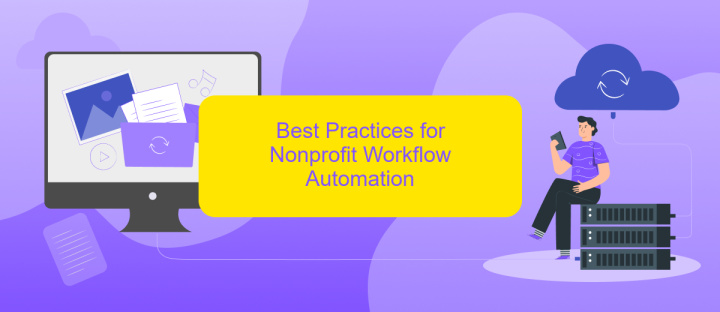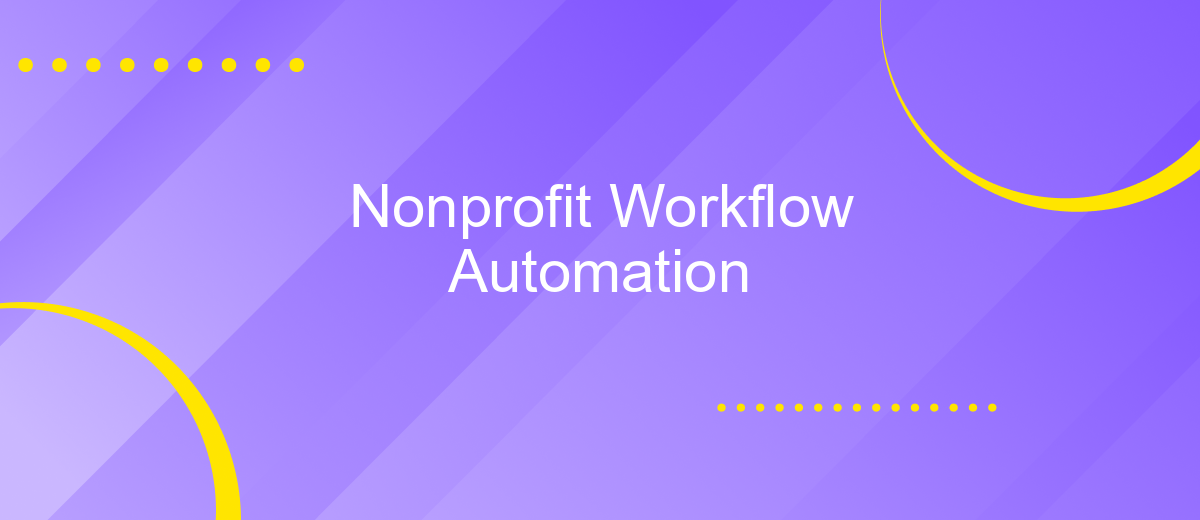Nonprofit Workflow Automation
In today's fast-paced digital landscape, nonprofit organizations must leverage technology to streamline their operations and maximize impact. Workflow automation offers a powerful solution to reduce manual tasks, enhance efficiency, and improve donor engagement. By implementing automated processes, nonprofits can focus more on their mission and less on administrative burdens, ultimately driving greater change and fostering a more significant community impact.
Nonprofit Workflow Automation
Nonprofit workflow automation is a game-changer for organizations looking to streamline their operations and maximize their impact. By automating repetitive tasks, nonprofits can save time, reduce errors, and focus more on their core mission.
- Automated donor management
- Streamlined volunteer coordination
- Efficient financial reporting
- Enhanced communication channels
- Seamless data integration
One effective tool for achieving seamless data integration is ApiX-Drive. This service allows nonprofits to connect various applications and automate data transfers without needing extensive technical expertise. By leveraging ApiX-Drive, organizations can ensure that their systems are always up-to-date, enabling more informed decision-making and better resource allocation. Ultimately, nonprofit workflow automation empowers organizations to operate more efficiently and make a greater impact in their communities.
Benefits of Nonprofit Workflow Automation

Nonprofit workflow automation significantly enhances operational efficiency by streamlining repetitive tasks and reducing manual errors. This allows nonprofit organizations to allocate more resources towards their mission-driven activities rather than administrative duties. Automation tools can handle tasks such as data entry, donor management, and event planning, freeing up staff to focus on strategic initiatives and community engagement.
Additionally, integrating various systems through platforms like ApiX-Drive can further optimize workflows by ensuring seamless data transfer between different applications. This integration capability reduces the need for manual data entry and minimizes the risk of errors, leading to more accurate and timely information. By leveraging automation and integration tools, nonprofits can improve their overall productivity, enhance donor relationships, and ultimately increase their impact on the communities they serve.
Best Practices for Nonprofit Workflow Automation

Implementing workflow automation in nonprofit organizations can significantly enhance efficiency and reduce manual errors. To achieve the best results, it is crucial to follow certain best practices.
- Identify repetitive tasks: Start by pinpointing tasks that are repetitive and time-consuming. These are prime candidates for automation.
- Choose the right tools: Select automation tools that are user-friendly and can integrate seamlessly with your existing systems. For instance, ApiX-Drive is a valuable service that helps in setting up integrations effortlessly.
- Train your team: Ensure that your staff is well-trained to use the automation tools effectively. This will maximize the benefits of automation.
- Monitor and evaluate: Continuously monitor the automated processes and evaluate their performance. Make adjustments as needed to optimize efficiency.
- Ensure data security: Protect sensitive information by implementing robust security measures within your automated workflows.
By adhering to these best practices, nonprofit organizations can streamline their operations, allowing them to focus more on their mission and less on administrative tasks. The right automation strategy can lead to significant time and cost savings, ultimately enhancing the overall impact of the organization.
Challenges of Nonprofit Workflow Automation

Nonprofit workflow automation presents numerous challenges, despite its potential to streamline operations and increase efficiency. One of the primary issues is the limited budget often available to nonprofit organizations, which can restrict access to advanced automation tools and technologies. Additionally, the lack of technical expertise within many nonprofits can make it difficult to implement and maintain automated systems effectively.
Another significant challenge is the integration of various systems and platforms used by nonprofits. Many organizations rely on a diverse range of software for different functions, such as donor management, event planning, and volunteer coordination. Ensuring these systems communicate seamlessly can be a daunting task, particularly for smaller nonprofits with limited IT resources.
- Budget constraints limiting access to advanced tools
- Lack of technical expertise for implementation and maintenance
- Integration issues with diverse software systems
- Data security and privacy concerns
To address these challenges, nonprofits can leverage services like ApiX-Drive, which simplifies the process of integrating various applications and automating workflows without requiring extensive technical knowledge. By utilizing such tools, nonprofits can overcome some of the barriers to effective workflow automation, ultimately enhancing their operational efficiency and impact.
- Automate the work of an online store or landing
- Empower through integration
- Don't spend money on programmers and integrators
- Save time by automating routine tasks
Conclusion
In conclusion, nonprofit workflow automation stands as a transformative approach for organizations aiming to maximize their impact while optimizing operational efficiency. By automating repetitive tasks, nonprofits can redirect valuable time and resources towards their core mission, fostering greater engagement and outcomes. The integration of advanced tools and platforms, such as ApiX-Drive, facilitates seamless connectivity between various applications, ensuring a smooth and efficient workflow.
Moreover, the adoption of workflow automation not only enhances productivity but also improves data accuracy and consistency, which are critical for informed decision-making. As nonprofits continue to embrace digital transformation, leveraging automation technologies will be pivotal in driving sustainable growth and achieving long-term objectives. By carefully selecting and implementing the right automation solutions, nonprofits can unlock new levels of efficiency, transparency, and effectiveness in their operations.
FAQ
What is nonprofit workflow automation?
How can workflow automation benefit nonprofit organizations?
What types of tasks can be automated in a nonprofit organization?
How can nonprofits get started with workflow automation?
Is it expensive to implement workflow automation in a nonprofit organization?
Strive to take your business to the next level, achieve your goals faster and more efficiently? Apix-Drive is your reliable assistant for these tasks. An online service and application connector will help you automate key business processes and get rid of the routine. You and your employees will free up time for important core tasks. Try Apix-Drive features for free to see the effectiveness of the online connector for yourself.


